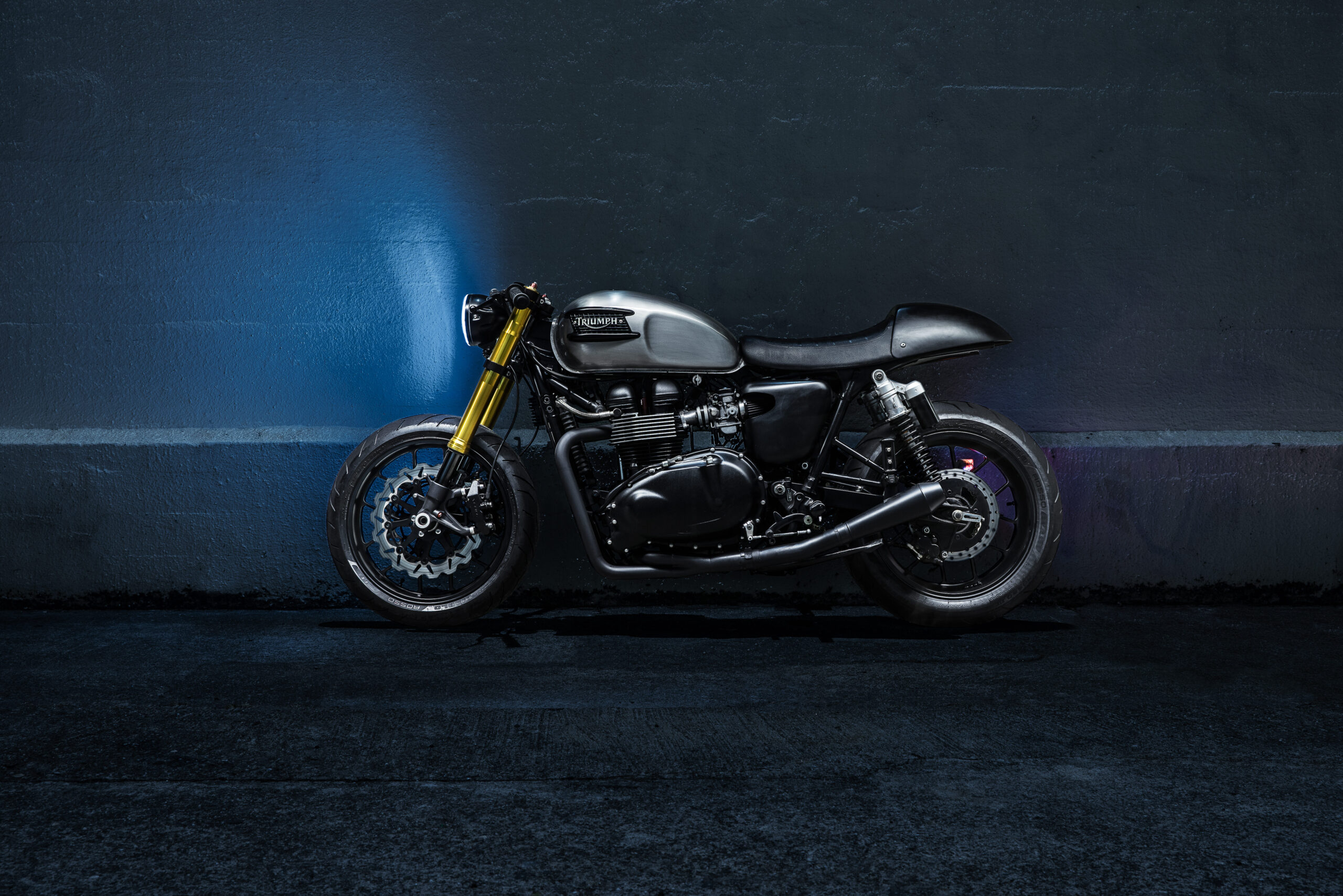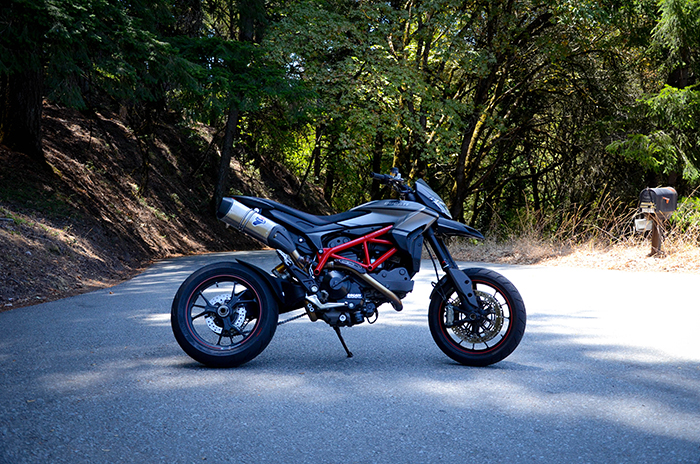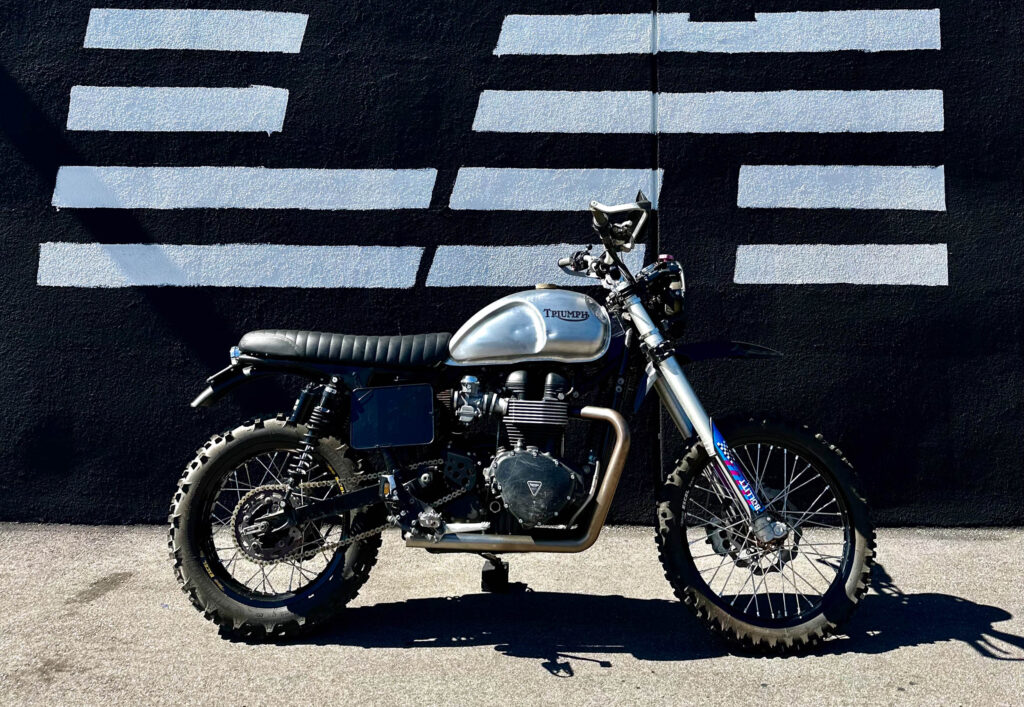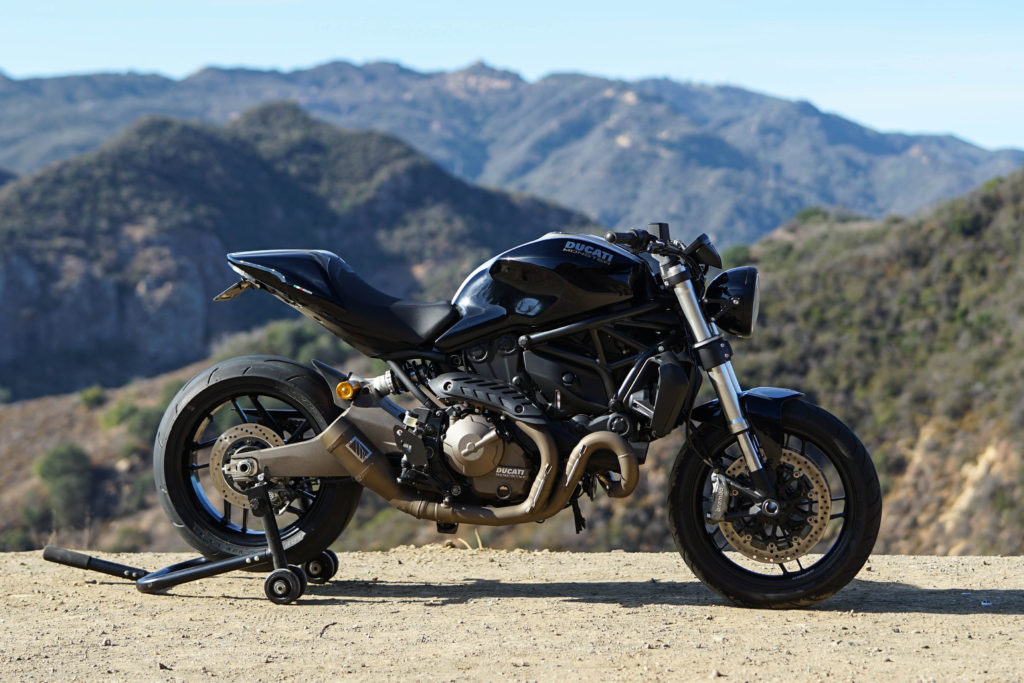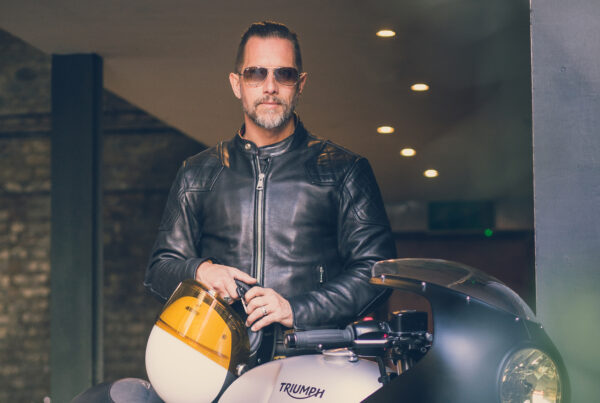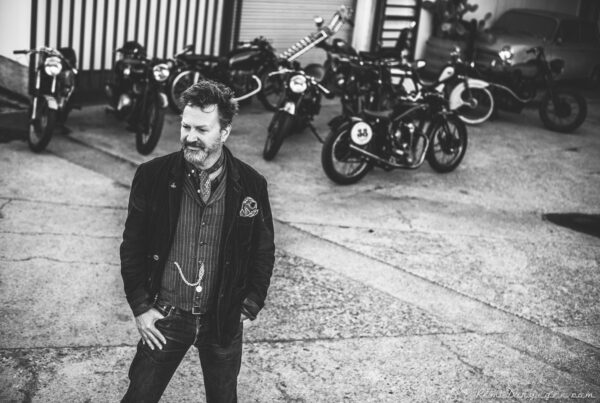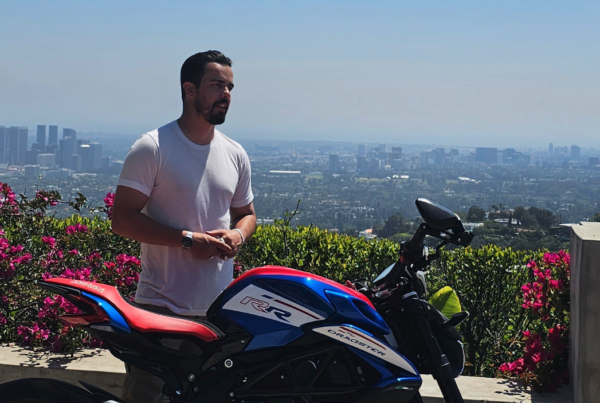Industrial design meets moto art
Welcome back to another installment of Behind The Bars, The Bullitt’s celebration of the humans behind the machines we love. If you are a regular reader of this column you know we are generally bullish on the overall state of affairs within the moto industry simply because, well, we’re like you and are addicted to the sound, smell and sensation of riding. Plus, The Bullitt is located in SoCal which feels like the epicenter of motorcycle culture – we tend to only see the good and ignore the haters, industry articles and social media mentions about the flatlining of the motorcycle industry. Recently, we decided it would be fun to profile some of the people who inspire us, challenge our point of view on design, or in some cases, just one up themselves and the industry as a whole.
For our fifth feature, we’ve chosen British ex-pat, Hugo Eccles. Eccles is co-founder and design director of Untitled Motorcycles, a company based in San Francisco and London that designs and builds custom motorcycles for both private clients and factory brands like Ducati, Moto Guzzi, Triumph, Yamaha and Zero. I’ve had the pleasure of working with Hugo on some of his famous builds while I was on marketing teams at for many of the brands listed above. Seeing his Hyper Scrambler roll onto Ducati Island – then appear on Jay Leno – was cool to be behind the scenes on. When I was at Moto Guzzi, I selected Hugo as one of four “V9 Pro Builders” and saw him crank out his V9 Fat Tracker that shared similar vibe of the Hyper Scrambler, and was certainly one of the more unique builds we saw on that program. I also got to see his ‘Supernaturale’, a customized 1975 Moto Guzzi 850T beat 300+ entrants to win the Design & Style Award at the Quail Motorcycle Gathering 2017. Safe to say this dude can build.
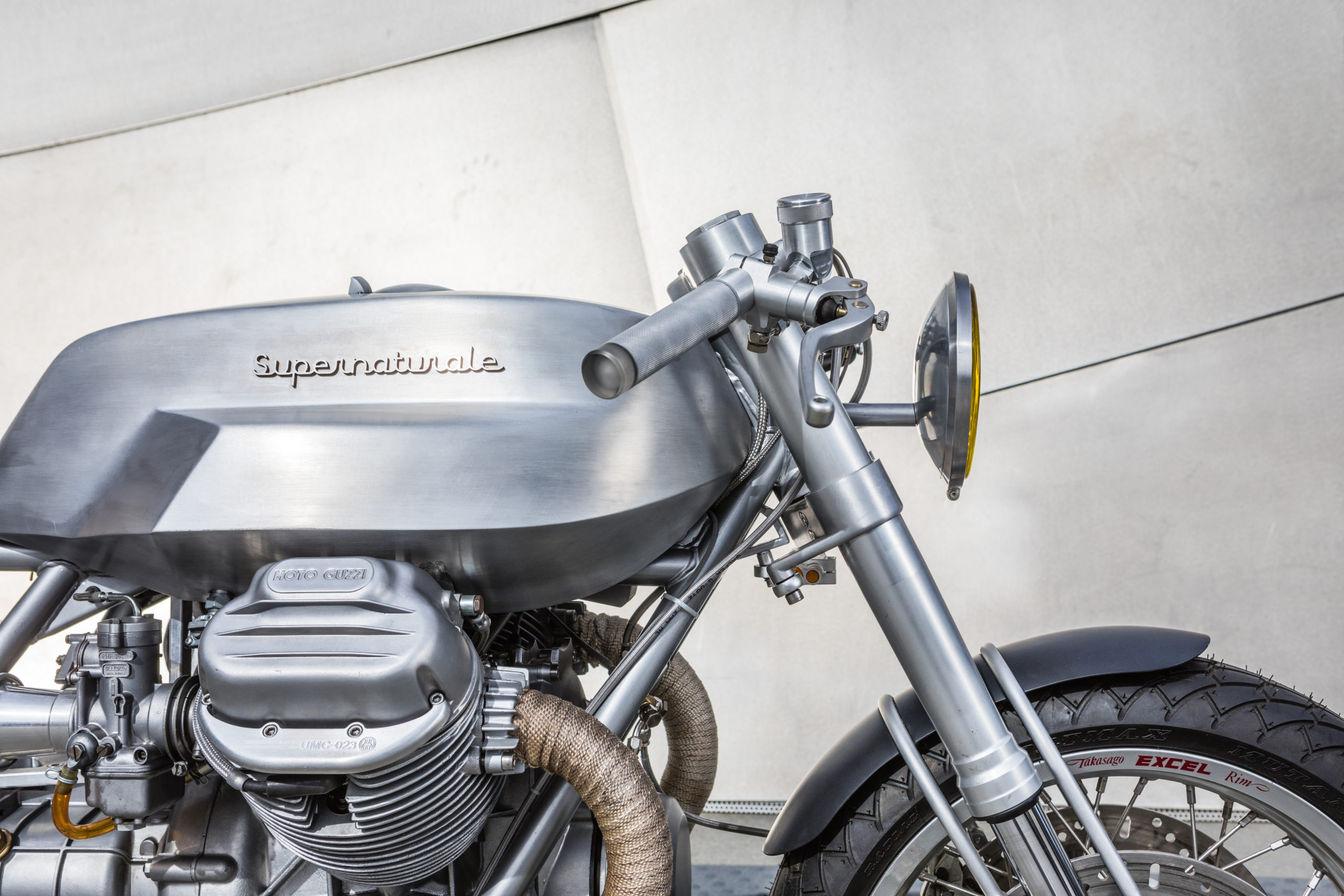
Untitled’s Supernaturale. Photo: Erik Jutras.
Aside from being a motorcycle builder, Eccles is also a professor of industrial design. His background in industrial design clearly has an influence on his motorcycle designs. Hugo has a very clean and minimalist approach to his builds and often pines over minute details. On his builds, something like a simple switch or starter button might get revisited and revised countless times. To some this exercise might seem excessive. To Hugo, it’s just the way he operates.
Eccles’ most recent build the ZERO XP (pictured below) is an experimental electric motorcycle that explores the future of motorcycles by taking a first-principles design approach. Before we jumped into our standard questions, we had a few extra for Hugo on his XP.
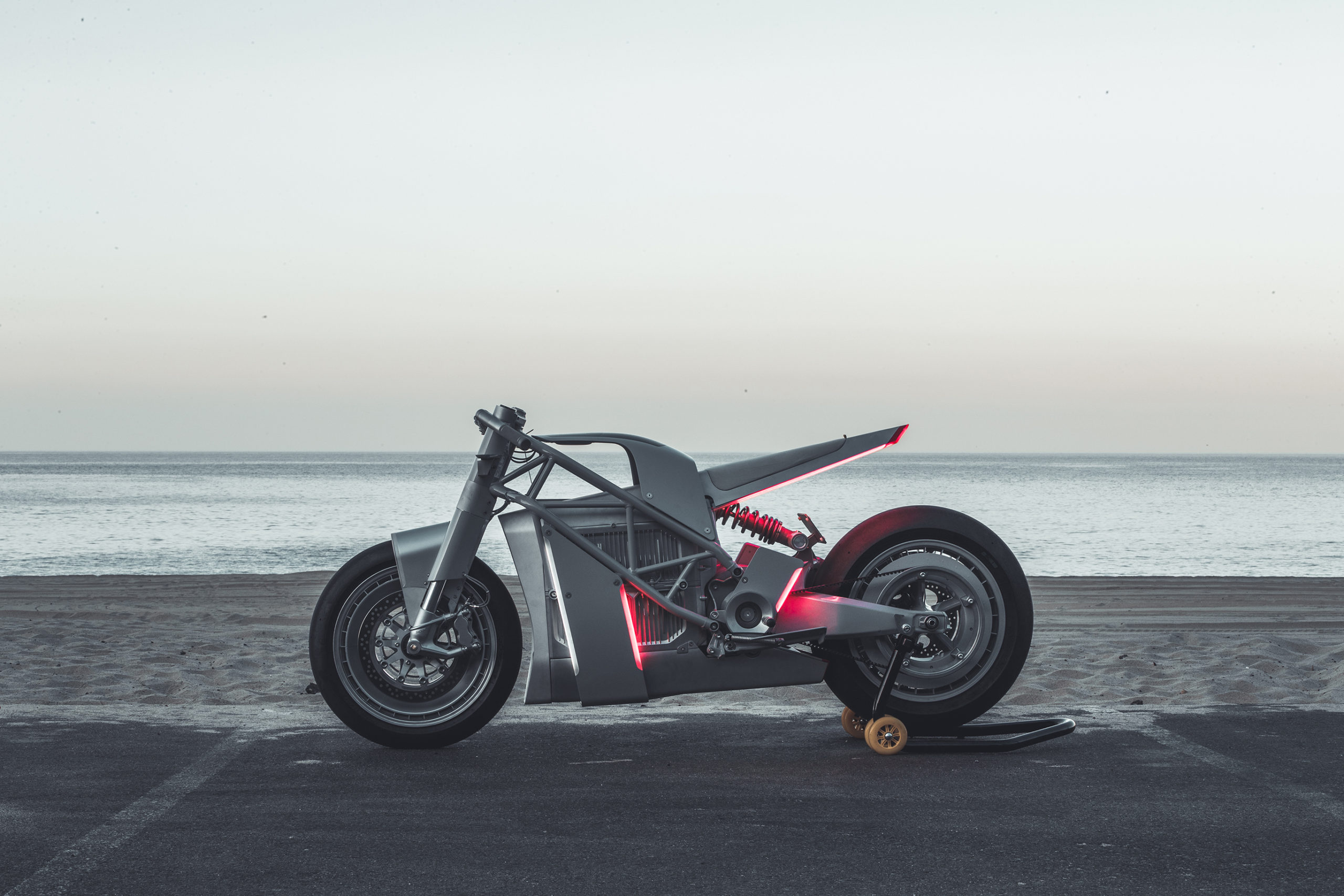
Zero XP by Hugo Eccles. Photo: Aaron Brimhall.
Name: Hugo Eccles
Company: Design Director, Untitled Motorcycles
Can you share a little on the modern/minimal design aesthetic on the XP?
I think the simpler aesthetic reflects the simpler mechanics of an electric. An electric motorcycle has about one fifth of the part count of a combustion motorcycle. A pared-down aesthetic comes naturally since there’s just fundamentally fewer things that are required to make the motorcycle function – no gas tank, no carburetors, no radiator, no exhaust. It’s an opportunity to minimize the distance between the rider and the riding experience. I’m a big fan of Lotus Cars founder Colin Chapman’s saying “simplify and add lightness” which I apply to gasoline and electric builds alike.
Will you share your thoughts on on how electric will be more about IoT/AI fused with design?
Although on the surface a small difference, the addition of modern UI (user interface), UX (digital user experience) and IoT (internet of things) to a motorcycle has huge implications. The addition of technology fundamentally changes the essence of the motorcycle, making it simultaneously both analog and digital. No longer is the motorcycle just an inert machine but almost ‘alive’ with the ability to predict, anticipate and recognize. It will change the nature of motorcycling.
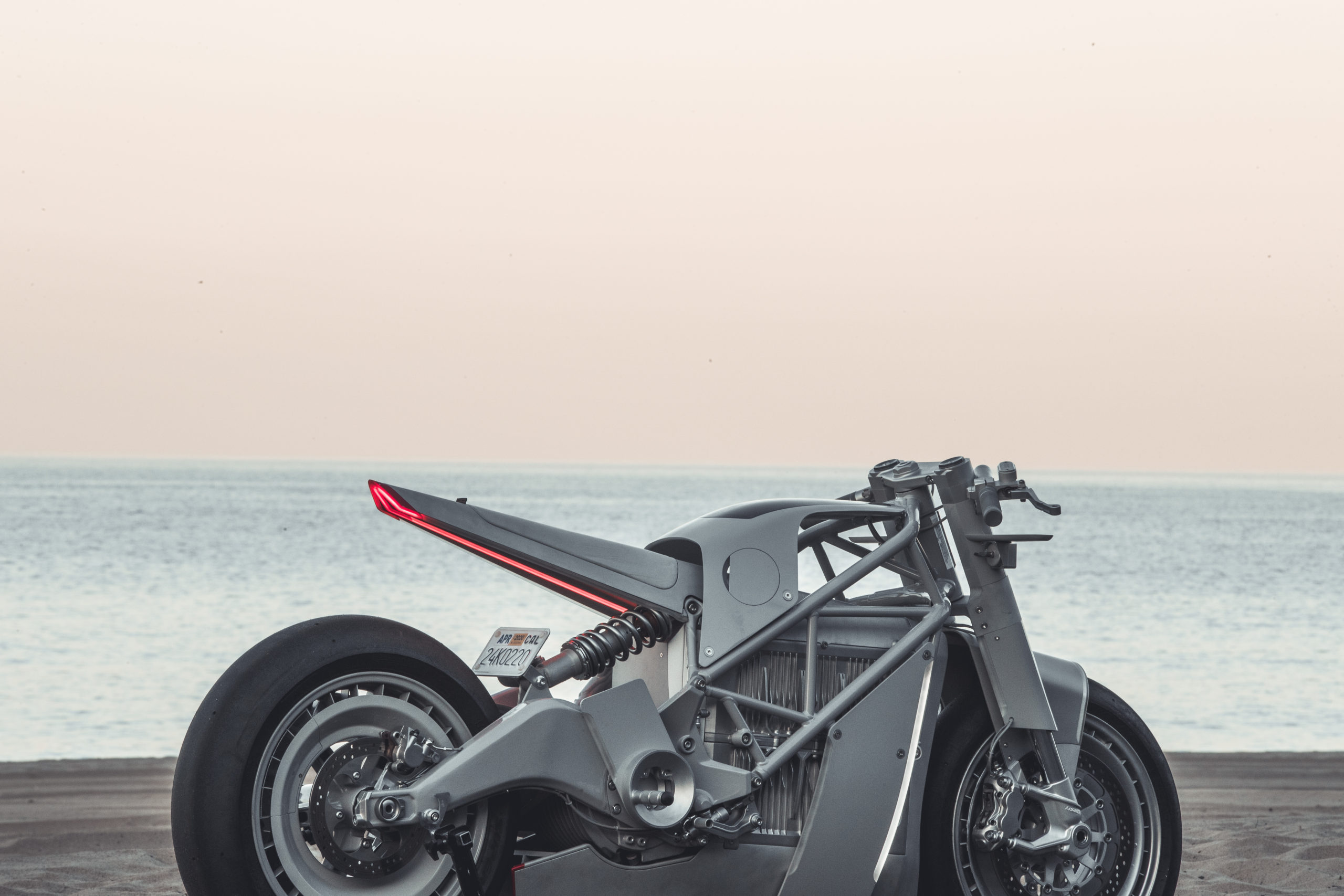
Photo: Aaron Brimhall
What are your thoughts on the new trend towards custom electric bikes?
Our ideas of motorcycles are based on the history and the physical constraints of the internal combustion engine. With the introduction of electric those constraints and those ‘rules’ disappear. An electric motorcycle doesn’t need any of those traditional combustion elements – tank, exhaust, and so on – but still designers resist the opportunity. Interestingly, it’s no longer a limitation of technology but, instead, a limitation of confidence, of belief. We, and the industry, can rewrite the rules if we choose to believe we can rewrite the rules.
What you see the design future of motorbikes looking like through the lens of electric?
I believe the future of motorcycling is full of exciting possibilities and perplexing challenges. I’m interested to play an active role in navigating and steering how motorcycles and the motorcycle industry navigate and respond to nurturing new users, new riders’ safety concerns, issues around integrating with autonomy, and incorporating things like on-demand market models. I’m currently consulting on a number of those issues.
OK – now to get to know you a little better, let’s get to the Behind the Bars questions.
- What was the first bike you bought and why did you buy it?
My first motorcycle was a Yamaha TZR125. In the UK, where I’m originally from, you can ride small capacity motorcycles on your car license. I bought it when I was twenty one and rode it everywhere for four years until I got my full motorcycle license and traded it for a Kawasaki ZXR400.
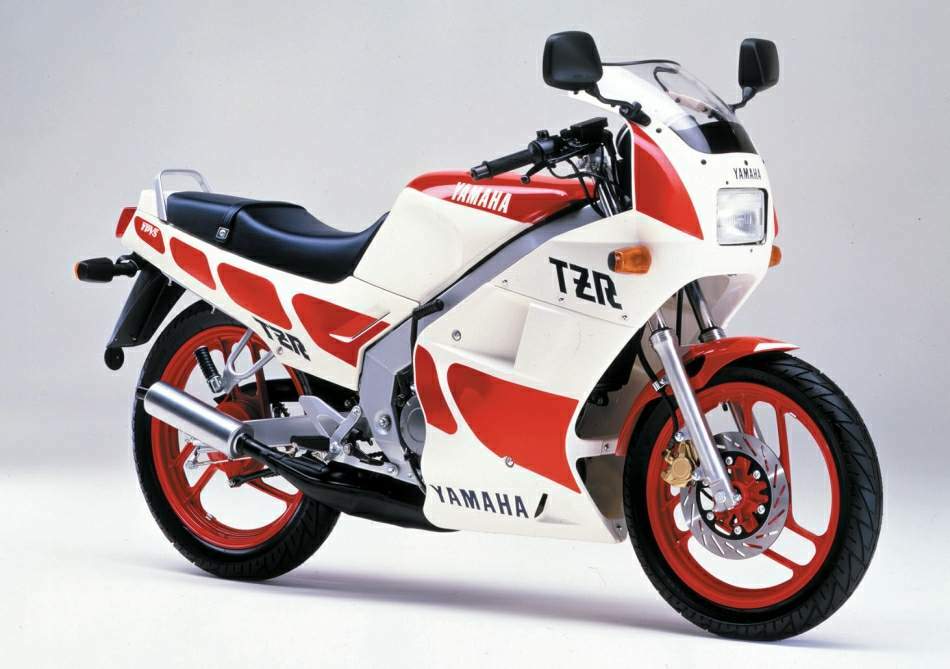
A Yamaha TZR125
- What’s a life lesson you learned from motorcycles?
– Don’t worry about the corner you’re in, concentrate on the next corner. Don’t look at the road beneath you but at the road ahead. There’s a life lesson in there somewhere.
– Always cover your brakes. (hahaha)
- What one person has influenced your interest in these machines – what about them helped form your ideas on this sport?
My most significant influence has to be the first petrolhead in my life – my Dad. He was an amateur racer who would take me and my mum to the track when I was a baby. The first car I remember was a white Sunbeam Tiger which was a perfectly usable Sunbeam Alpine that some guy called Carroll Shelby had transplanted a Ford V8 into. It was the precursor to the AC Cobra – another small British car with a huge American engine. We lived in the English countryside so my dad would commute to London on his orange Suzuki GS250 dressed in a full suit and tie underneath his waterproof coveralls – very cool and ‘James Bond’ to my impressionable mind.
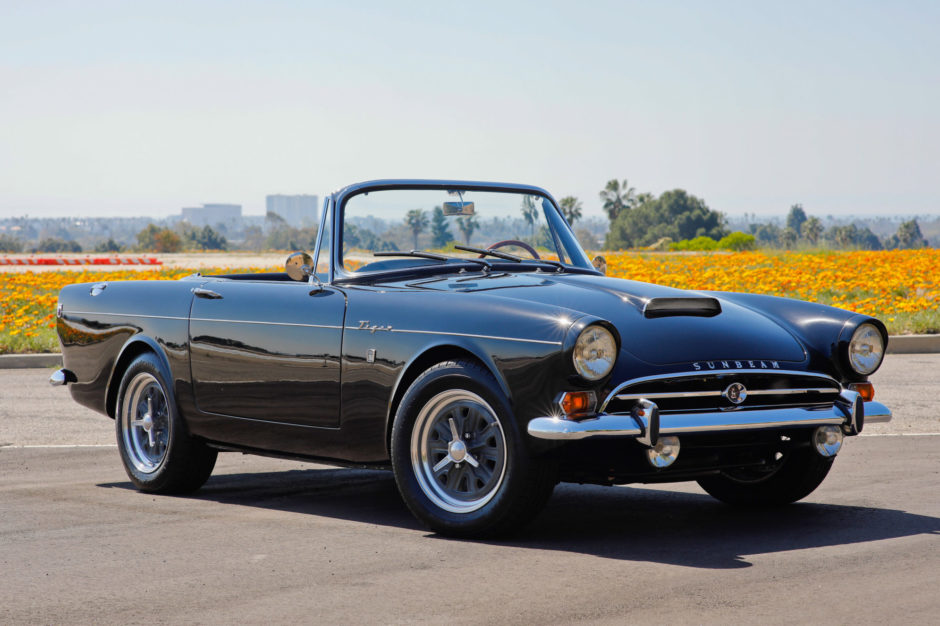
A 1964 Sunbeam Tiger
- Have motorcycles helped you discover some aspect of your personality and/or have they helped you understand your purpose?
I find riding a very calm and serene, almost zen-like, experience. It’s a form of therapy for me. Although it appears loud and frenetic on the outside it’s very peaceful at the center of the storm. That’s even more pronounced with an electric motorcycle where the calmer experience allows you to have a surprisingly different relationship with nature. Riding the XP in the canyons above San Francisco I’ve seen deer, coyote and wild turkey that would have normally disappeared long before my arrival.
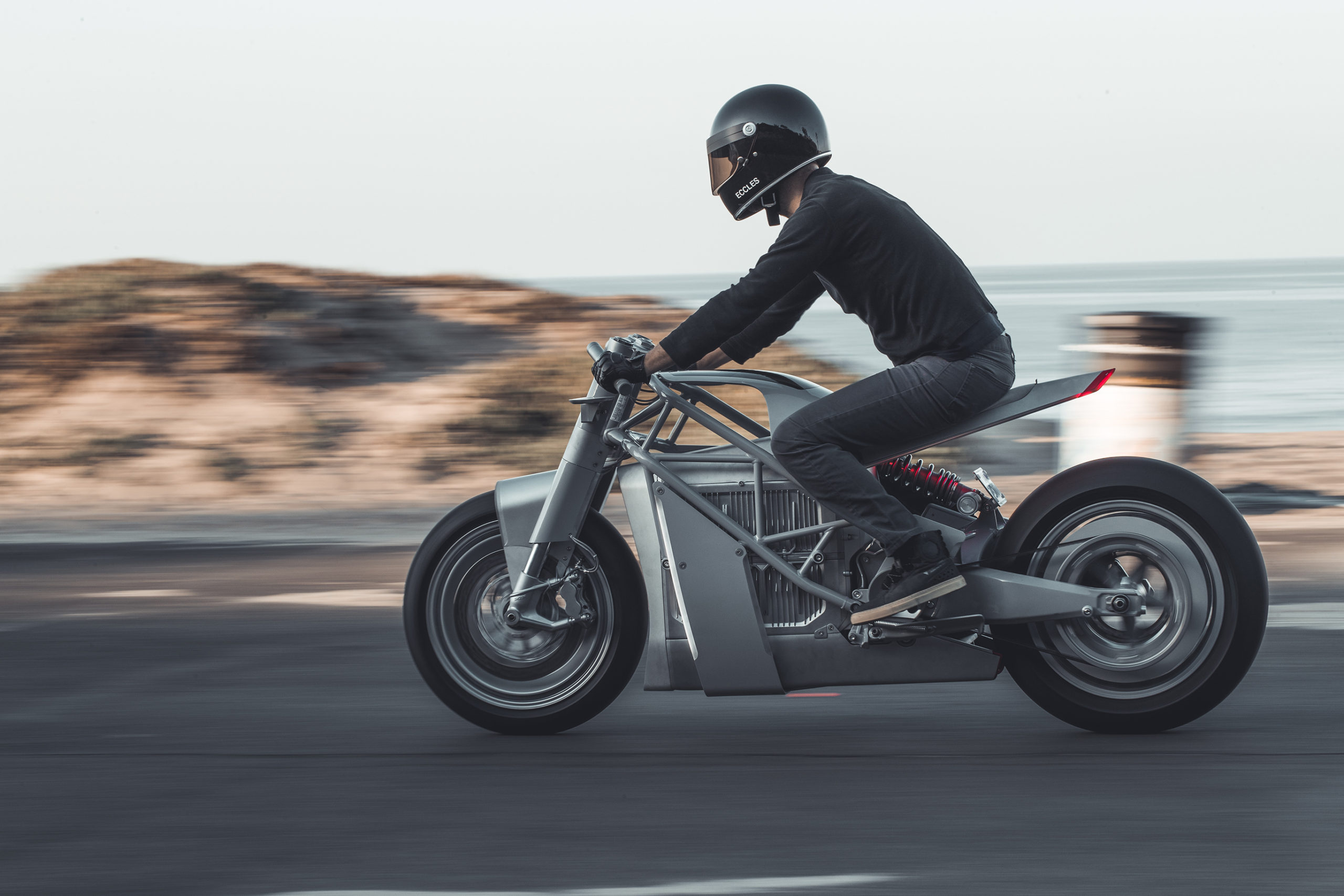
Eccles in action. Photo: Aaron Brimhall
- This industry is small, so give a shout out to a few people who are doing something unique, interesting or worthwhile.
The first shout out has to be a general ‘hello’ to my fellow builders – you’ll never meet a greater group of people. As a motorcycle designer, I like to confound expectations so I appreciate people who do the same. Designing classically beautiful motorcycles is relatively ‘easy’ from a design perspective because there are well-established rules of proportion, and so on. I appreciate people who have the courage to step outside of the status quo and beat their own path. In that vein I’d have to shout out to Karl Renoult aka Ed Turner and Dave from Death Spray Custom. There are definitely others who also deserve a mention.
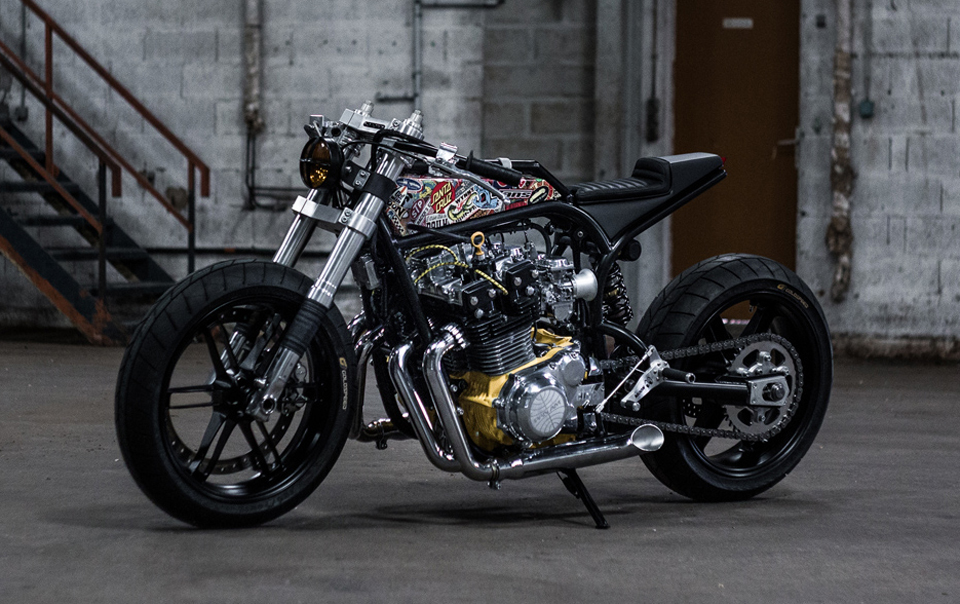
Ed Turner’s Suzuki GSX1100
- Gear is a big part of this sport, what is one thing you cannot (NOT) live without when riding?
For me the biggest two would be helmet and gloves, probably because my professions (industrial design and motorcycle design) depend on both. Also, can you imagine how complicated hands are to rebuild?!
- You just found out you have one week to live. That gives you a few days to squeeze in 1-2 days of riding. What bike and where do you go?
If I had only a week to live I’d probably ride a bike I’m very familiar with. The Hyper Scrambler is a bike I built four years ago and has been my daily driver since then. It just can’t be beat on Canyon roads. Otherwise I’d love to ride a Britten V1000. What John Britten achieved twenty five years ago was amazing then and remains so today. I’ve seen a few of the ten remaining examples and they’re exquisite looking and the handling is supposed to be without compare. As for the ‘where’ I’d have to pick Italy, specifically the island of Sardinia. You can’t equal the combination of stunning roads, beautiful villages, and breathtaking landscape.
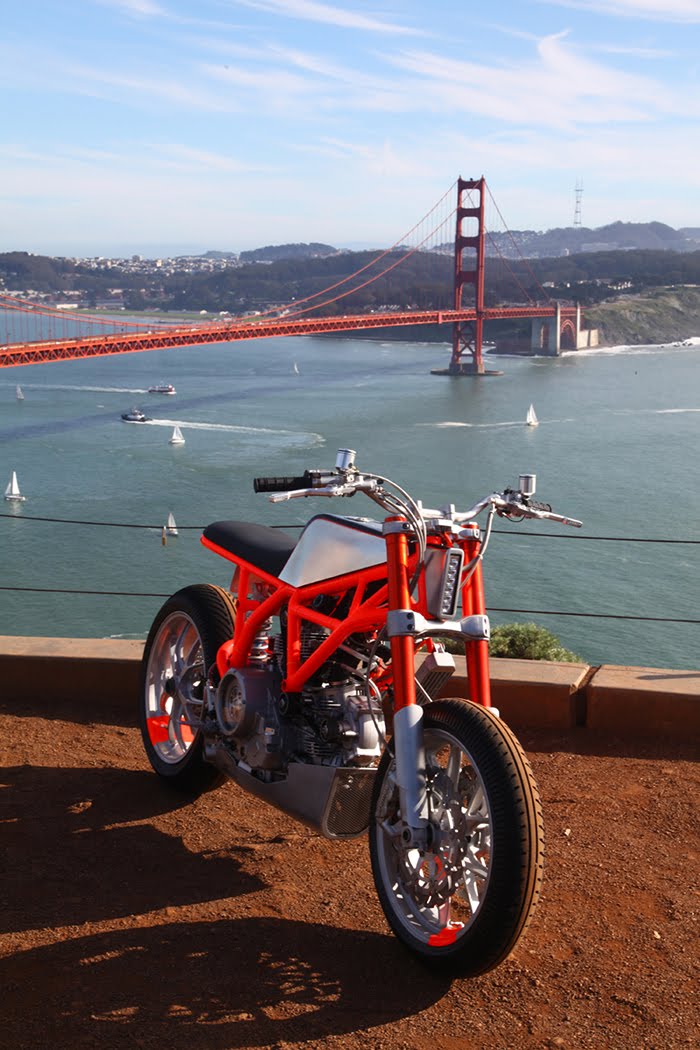
Untitled Motorcycles’ Hyper Scrambler. Photo: Erik Jutras
- You have $10k and one hour to buy a bike…. Go.
I had to think about this one for a while.
I considered new bikes that I could afford with that budget but none of them excite me. In my three decades of motorcycling I’ve owned, and almost-owned, some great bikes which with $10K burning a hole in my pocket I’d revisit. In no particular order, they are:
– Kawasaki ZXR400. My first ‘proper’ bike once I got my full motorcycle license. Lightweight, fast, looked great in limited-edition metallic burgundy, and those inlet tubes!.
– Suzuki GSX-R400. The one that got away. I almost bought a grey market version that had been imported from Japan to the UK. It looked like a beautiful silver shark. I still regret not buying it.
– Ducati 748. Probably the best bike I’ve ever owned. Light, powerful, and handled beautifully. Near-perfect weight distribution that always felt nimble yet planted. Just awesome, and one of the prettiest bikes ever penned by the late great Massimo Tamburini (ok, with the exception of the MV Agusta V4 Oro).
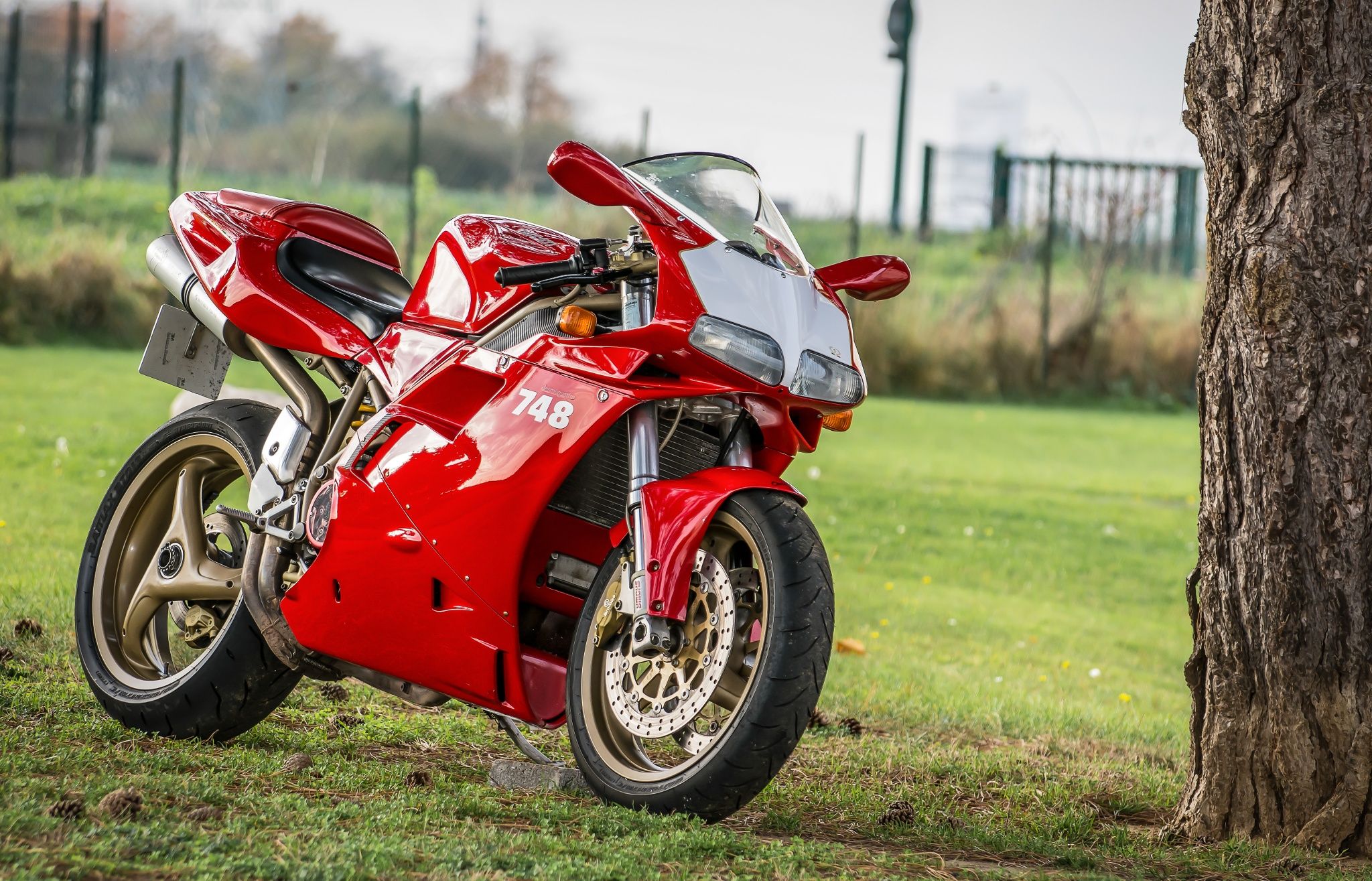
Ducati 748. Photo: Ludovic Petitfrere
- What motorcyclist do you identify with and why? Ponch, The Fonz, or Evel Knievel.
I’d have to pick Evel Knievel. Growing up in England I had an Evel Knievel toy which fascinated me. It was my first introduction to Americana and probably seeded my desire to emigrate across the Pond.
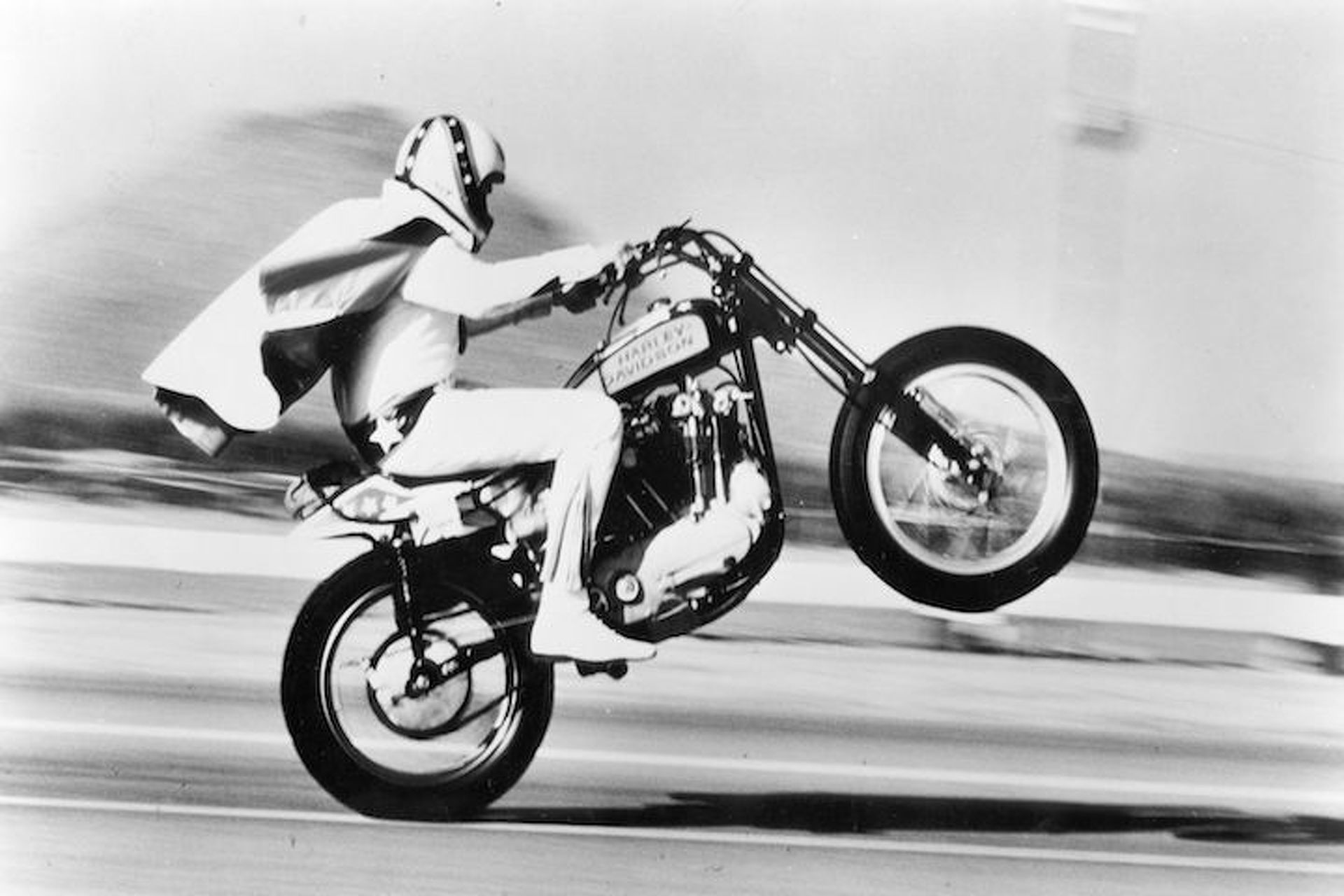
Evel in action
- When normal people (the ones who drive around in cages) ask you why you ride a machine that is so dangerous, what do you tell them?
Well, first, no-one gets out alive so the idea that you can somehow cheat death is a dangerous conceit in itself. Many things in life are potentially dangerous so it’s a matter of outlook, I suppose. Everything has a risk. You could choke and die on breakfast cereal. There’s not really anything else like riding a motorcycle. It feels like an extension of your body so everything is very immediate and you’re connected to your environment in a way you’re not in a car- you feel the wind, changes in temperature, the smell of the plants and trees.
- Name a designer, not in the moto space, that influences your POV on your moto-designs.
I’m going to cheat and name two. First is Marcello Gandini who designed the Lamborghini Muira, Lamborghini Countach, Lancia Stratos, and so many other amazing cars. The clarity of purpose of Gandini’s work was – and still is – extraordinary. I recently visited the Museo Alfa Romeo and saw his 1968 Alfa Carabo in person. Although designed half a century ago, its audacity still puts most modern supercars to shame. The other is Colin Chapman of Lotus Cars whose mantra ‘simplify and add lightness” has become a mantra of my own.
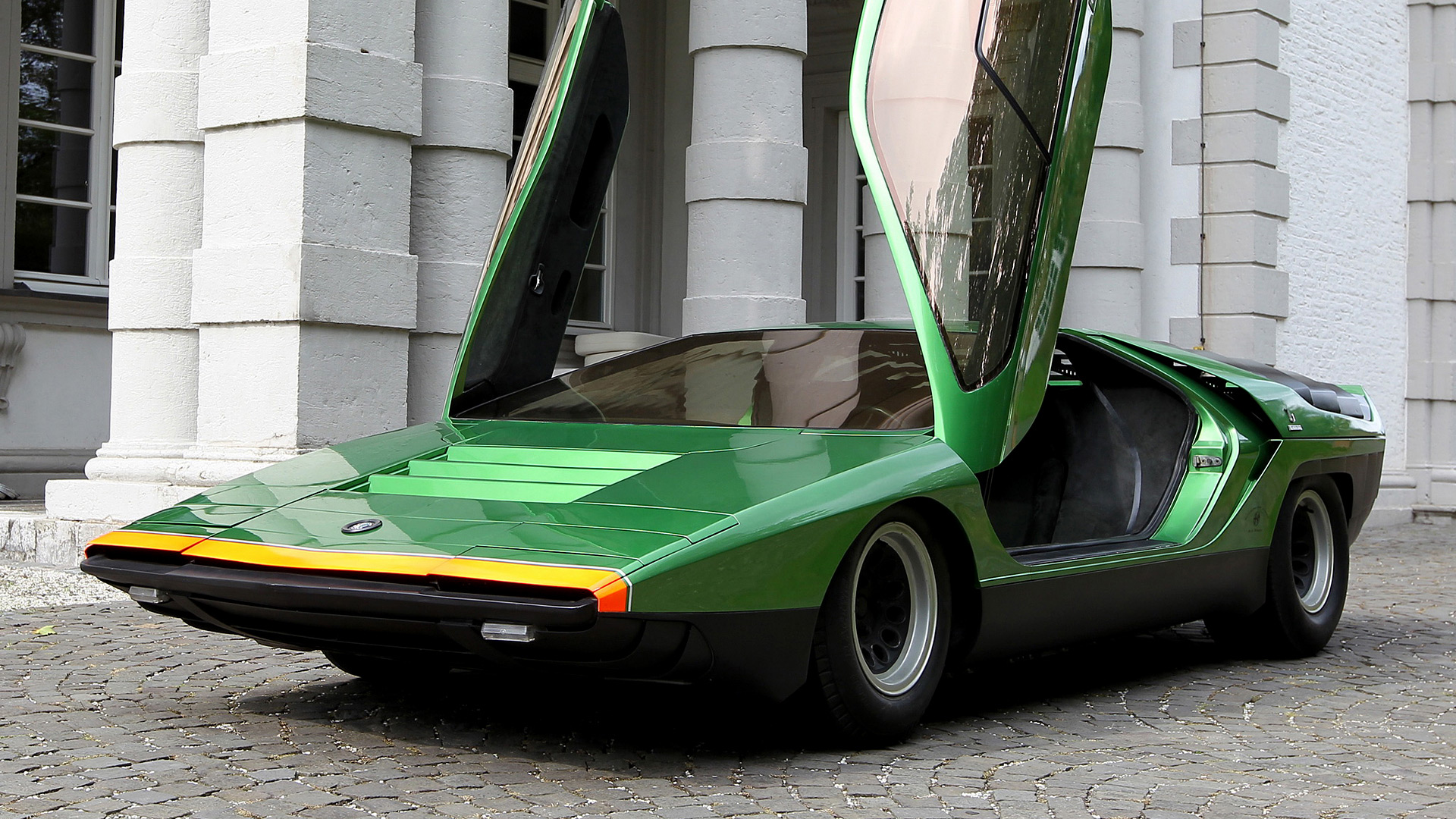
Marcello Gandini’s 1968 Alfa Romeo Carabo Concept
Well, thanks Hugo. Great getting to hear a little more about your background and what makes you tick. Keep those creative juices flowing and we’ll keep our eyes peeled for what’s next from Untitled.

